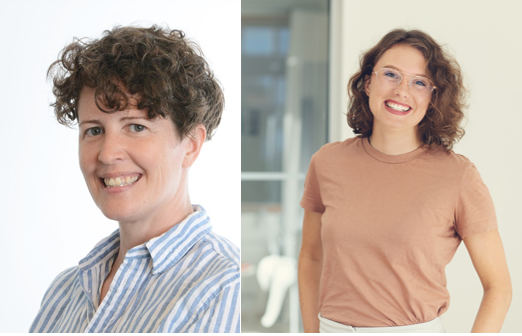Abstract:
In this paper, we investigate how participants in a second language (L2) learning context use a wide range of semiotic resources, such as gaze, gestures and the chat function, during repair organization in a video-mediated environment. Drawing on multimodal Conversation Analysis (CA), the study explores screen recordings of naturally occurring interactions in a digital language café. Language cafés are arenas where L2 users can socialize and practice a new language with first language-speaking (L1) volunteers without a set agenda other than just to talk. Because of social distancing during the COVID-19 pandemic and technological advances, many language cafés and language tutoring sessions moved online (e.g. Malabarba et al., 2022).
Based on the analysis of a single case, this paper analyses a prolonged repair sequence in which the L2 speaker of Norwegian teaches the L1 speaker of Norwegian about the Arabic script. The topic causing challenges is a letter in the Arabic alphabet. The participants draw upon gesture-talk combinations (Eskildsen & Wagner, 2015) and the chat function in the videoconference platform to collaboratively achieve mutual understanding. The findings demonstrate that the chat function’s affordances of writing and visualizing Arabic letters contribute to solve metalinguistic problems and provide support for the participants' metalinguistic practices. In addition, the paper discusses how the “fractured ecologies” (Luff et al., 2003) of video-mediated interaction might challenge how participants perceive and interpret each other’s actions and practices. Finally, we discuss analytical challenges posed by the asymmetric nature (Arminen et al., 2016) of the video-mediated environment.
The findings contribute to our understanding about how participants draw on embodied, verbal and screen-based resources to establish mutual understanding and create moments of language learning in the ‘polyfocal’ setting (Thorne & Hellermann, 2022) of video-mediated interaction (Çolak & Balaman, 2022; Dooly & Tudini, 2022; Uskokovic & Talehgani-Nikazm, 2022). The study provides new empirical insights on how interactants’ multimodal practices may be shaped by the affordances and constraints of video-mediated settings.
References
Arminen, I., Licoppe, C., & Spagnolli, A. (2016). Respecifying Mediated Interaction. Research on Language and Social Interaction, 49(4), 290–309. https://doi.org/10.1080/08351813.2016.1234614
Çolak, F., & Balaman, U. (2022). The use of online dictionaries in video-mediated L2 interactions for the social accomplishment of Virtual Exchange tasks. System, 106, 102772. https://doi.org/10.1016/j.system.2022.102772
Dooly, M., & Tudini, V. (2022). ‘We should google that’: The dynamics of knowledge-in-interaction in an online student meeting. Classroom Discourse, 13(2), 188–211. https://doi.org/10.1080/19463014.2021.2023596
Eskildsen, S. W., & Wagner, J. (2015). Embodied L2 Construction Learning: Embodied L2 Construction Learning. Language Learning, 65(2), 268–297. https://doi.org/10.1111/lang.12106
Luff, P., Heath, C., Kuzuoka, H., Hindmarsh, J., Yamazaki, K., & Oyama, S. (2003). Fractured Ecologies: Creating Environments for Collaboration. Human–Computer Interaction, 18(1–2), 51–84. https://doi.org/10.1207/S15327051HCI1812_3
Malabarba, T., Mendes, A. C. O., & de Souza, J. (2022). Multimodal Resolution of Overlapping Talk in Video-Mediated L2 Instruction. Languages, 7(2), 154. https://doi.org/10.3390/languages7020154
Thorne, S. L., & Hellermann, J. (2022). Coda: The interactional affordances and constraints of technology-rich teaching and learning environments. Classroom Discourse, 13(2), 231–239. https://doi.org/10.1080/19463014.2022.2071959
Uskokovic, B., & Talehgani-Nikazm, C. (2022). Talk and Embodied Conduct in Word Searches in Video-Mediated Interactions. Social Interaction. Video-Based Studies of Human Sociality, 5(1). https://doi.org/10.7146/si.v5i2.130876
Author biographies:
Jenny Gudmundsen (first author) is a PhD fellow at Center for Multilingualism in Society across the Lifespan (MutliLing) at University of Oslo. Her PhD-project deals with how people interact in digital language cafés, arenas where second language users practice their new language with first language-speaking volunteers. Using Conversation Analysis with a multimodal approach, she investigates how participants co-construct social practices when encountering language-related issues in video-mediated settings.
E-mail: jenny.gudmundsen@iln.uio.no
Jessica Pedersen Belisle Hansen (co-author) is Associate Professor at Østfold University College. In her PhD project, she investigated the organization of video-mediated interpreting in hospital encounters using multimodal conversation analysis. Her research includes interaction in classroom settings, interaction in hospital settings, multimodal interaction and mediated interaction.
E-mail: jessica.p.hansen@hiof.no
